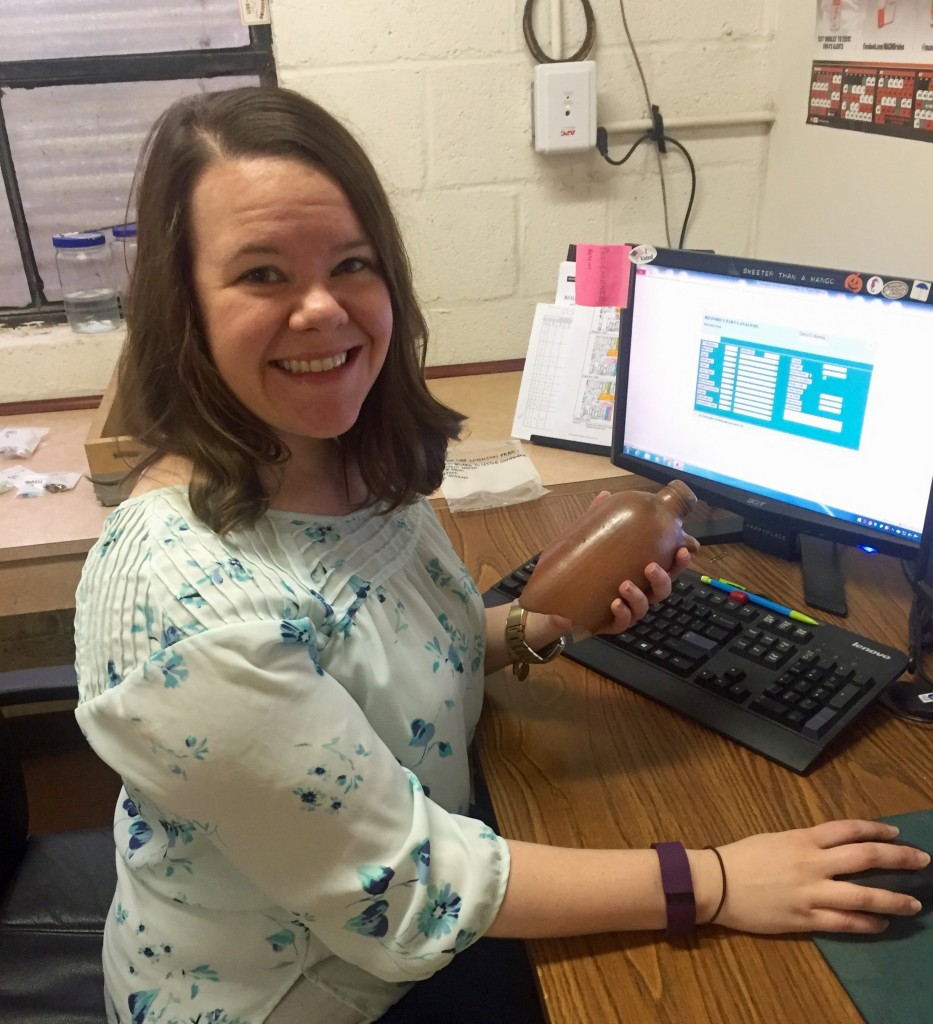Katie Kosack, graduated from UMB in 2010
Currently a Laboratory Supervisor at a CRM firm
For more about the Alumni Profile series, look at the inaugural post here.
1. What is your position now; what do you do on a day-to-day basis?
Currently I am the Laboratory Supervisor and Historic Analyst for a Cultural Resource Management (CRM) firm. My tasks vary depending on the projects I’m assigned to, where our crews are working, and the time of the year. One of the best parts of my job is it’s something new all the time. The collections I’ve worked on, for example, come from all over. It could be a 20th-century site in Ohio, an urban site in New Orleans, or a colonial period site from Maryland. Daily, I manage the processing (washing, sorting, labeling, etc.) of artifacts, complete the cataloging and analysis of historic period artifacts, photograph artifacts, help to write portions of reports, and arrange for final curation of collections with curation facilities. Database management and data manipulation are large parts of my day. Part of working for a CRM firm is being flexible, so I also complete site file and background research at state archives for upcoming projects. One of the highlights of my current position is organizing our internship program and working with college and high school interns in the lab.
2. What is the most interesting project (field, lab, academic, or community) that you have worked on recently?
Most recently I was part of a team from our firm that completed the analysis of thousands of artifacts from a large scale urban archeology project in New Orleans. We completed the cataloging and focused analysis of late-19th and early-20th century artifacts, particularly ceramics, glass bottles, and small finds, to explore consumerism and themes related to ethnicity and socio-economic status. One of my favorite parts of the project was the analysis of the collection of patent medicine bottles.
3. What is one thing that you remember specifically about your time at UMass?
The people — professors, my cohort, and staff at the Fiske Center are what I remember most about my time at UMass. Whether I found myself sorting through hundreds of redware sherds from the Hancock-Clarke House in Lexington, MA, in the middle of the woods excavating (and dodging ticks & poison ivy) at the Sarah Boston Farmstead at Hassanamesit Woods, or just having lunch in the lab lounge, I always remember being surrounded by great people with an infectious passion for archaeology. At UMass I made great connections and friendships that continue to make me a better person and archaeologist to this day!
4. What is the best advice you got (or wish you had gotten) in graduate school?
The best advice I got in graduate school was that a PhD program wasn’t a “requirement” and to think about it. I’ve learned that getting a PhD isn’t for everyone and isn’t necessary for every position. I’m glad that I decided to pursue a laboratory position out of the program and continue to use skills I learned at UMass everyday! Two other small pieces of advice to graduate students: 1. Just start writing! My thesis adviser, Christa told me this one afternoon after I had organized my outline for the 3rd time. It’s true just starting the writing process is half the battle and, 2. Don’t ignore 20th-century material culture…I never thought I’d be cataloging battery cores, light bulb parts, or so much white earthenware, but it’s everywhere!

